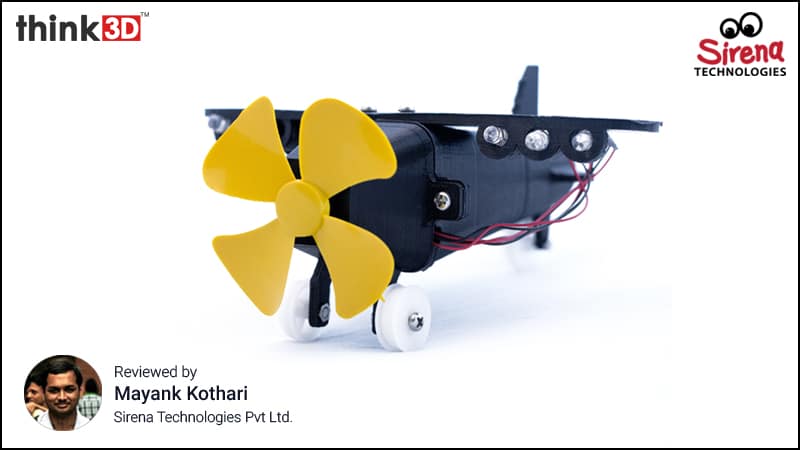Developing robots is a very complex process. Designs have to undergo many iterations before those get finalised. Hence prototyping robots using 3D printed parts are more suitable and is cost-efficient. We can quickly build a functioning prototype and understand the look and feel of it. This makes the entire process of designing and implementing robots more effective. We got a chance to meet the team that is working extensively on 3D Printing and Robotics and learn more about what they are doing and how 3D Printing is helping them.
Sirena Technologies was formed with a purpose to bring innovative world-class products to the market; designed and developed in India, leveraging global ecosystem. The company has built the first Indian Humanoid Robot ‘Nino’ and introduces SKIP (Sirena Knowledge and Information Program) for schools which is crafted to enable students to learn cutting-edge trending technologies which include Humanoids, Artificial Intelligence, Internet of Things, Voice Recognition, Computer Vision, Mechatronics, 3D printing, Android programming and more.

(a) Can you give a brief overview of the project you are working on?
We, at Sirena Technologies build robots and our flagship product is humanoid NINO. We take pride to say that we are the only organisation that is taking education industry by storm, as the children are made to learn robotics with a real humanoid. Not just that, we are also creating a platform called SKIP (Sirena Knowledge & Information Program) which enables and equips every child to build their own robots.
As we are a product company, the various prototypes of products are largely 3D printed prior to manufacturing the actual or life-size version of the same. The first prototype version of our humanoid robot NINO was completely 3D printed. We also use the 3D printing technology to design many other simpler robots which are a part of the study kits given to students of various grades in Sirena robotics lab which are set up in various schools across India.
(b) Why did you choose 3D Printing technology for the project and is it helping in the project?
SKIP (Sirena Knowledge & Information Program) offers various projects, each of it in itself is a potential product. However, the design of each product is taken through a process and the process itself majorly involves 3D printing until the finishing stage.
For instance, we have plane kits wherein the wings, fuselage, cockpit, etc are 3d printed. The evolution of a paper plane into a real plane is worthwhile for every child. The kid is able to draw and the process won’t stop there, to have an object created as you envisioned is a huge task accomplished.
The learning perspective is hugely benefited and enhanced as the 2d images are converted into 3d models.
(c) Which 3D Printing technology & machines are you using for the project?
We at Sirena Technologies are using FlashForge Dreamer model 3D printer supplied by think3D.
(d) Can you elaborate on the use of 3D printing in Education?
Children today are left wanting for more in this extremely fast-paced and competitive world. There is a need to adapt to changing trends, to embrace new technology and to learn. The essence of true understanding and learning is somehow setback because of the compulsive focus on results. With initiatives like SKIP(Sirena Knowledge & Information Program) which largely endorses 3D printing, we are addressing such core challenges as children are made to visualise and create objects. It can cater to children from Kindergarten to all grades. From mini cartoons for toddlers to geometrical objects to middle school children to mini robotic parts for high schoolers to design, gives them a plethora of options to invent and continue to build curiosity.
(e) Can you elaborate on the use of 3D printing in robotics?
The process of developing robots is complex. The designs undergo many iterations before being finalised. Hence prototyping robots using 3D printed parts are more suitable and is cost-efficient. We can very quickly build a functioning prototype and understand the look and feel of it. This makes the entire process of designing and implementing robots more effective.
For more details, please contact info@think3d.in or call to +91 81428 96564
